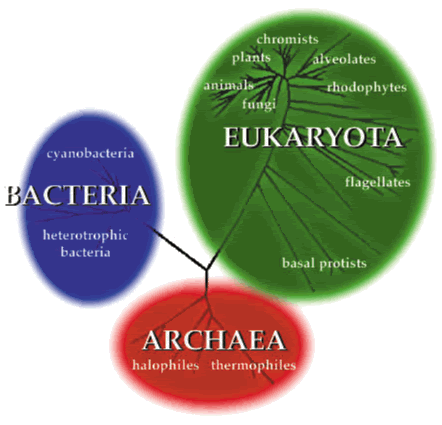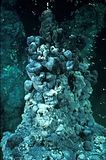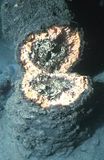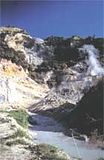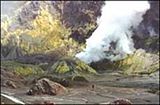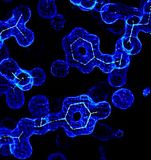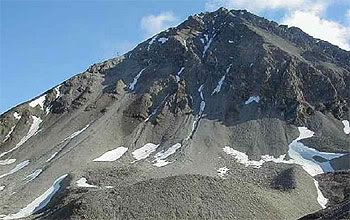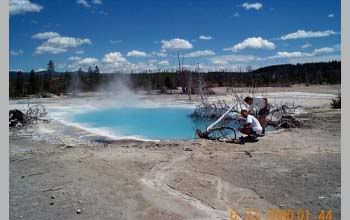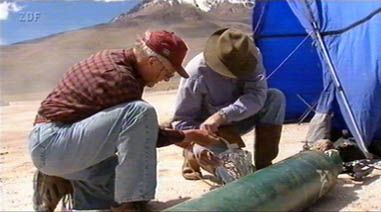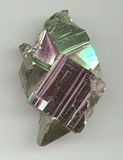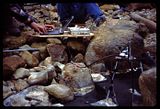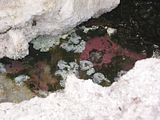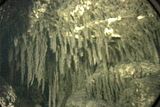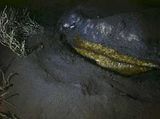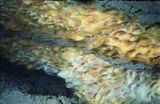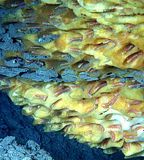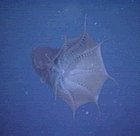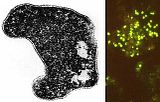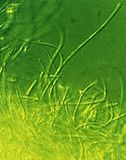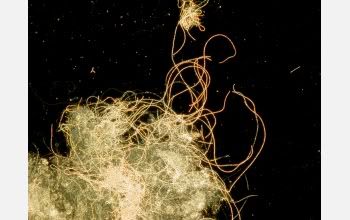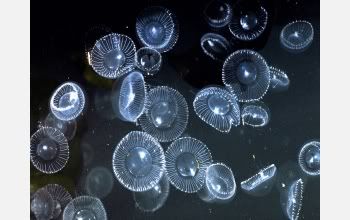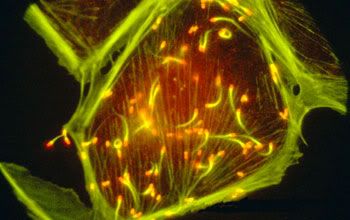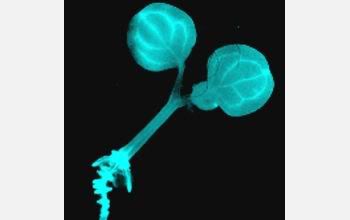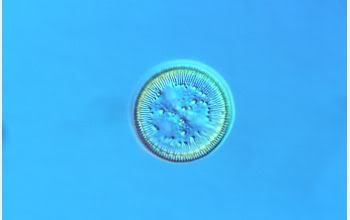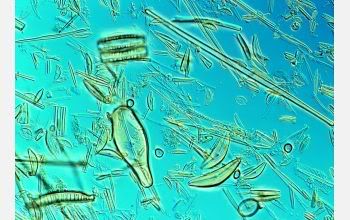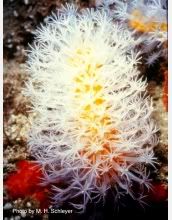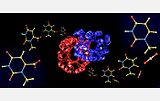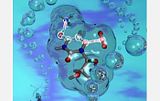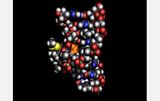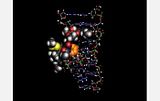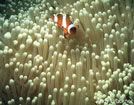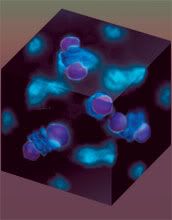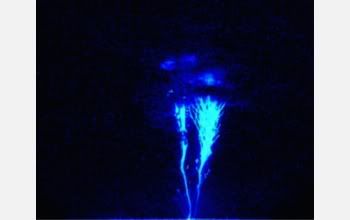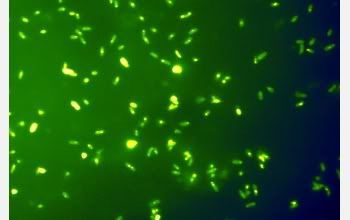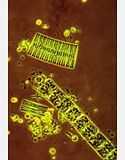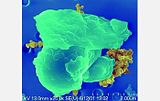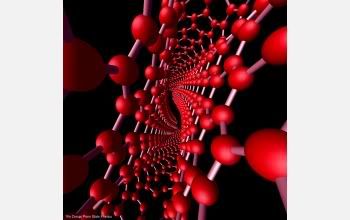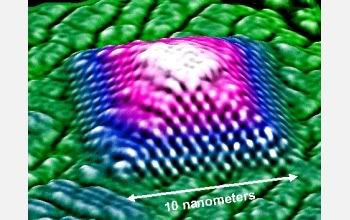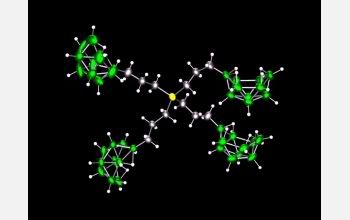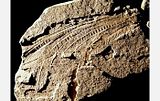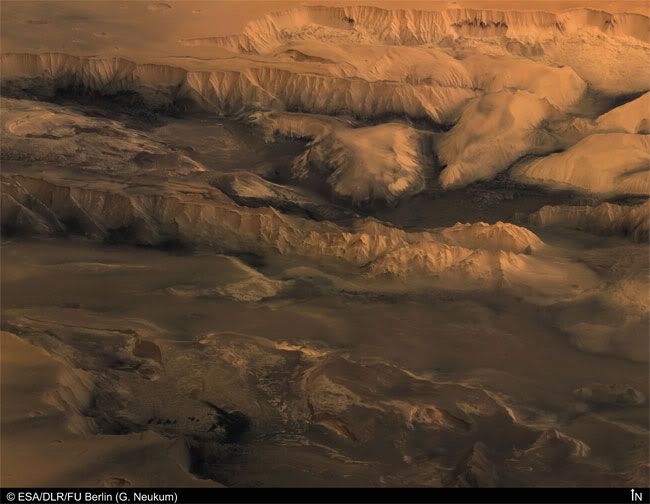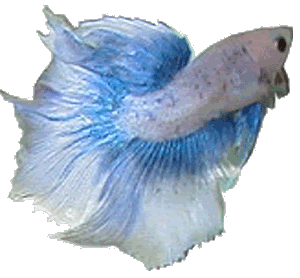SOUNDS OF SCI(L)ENCE
Some pics are thumbs. You know the routine. LOL.
If ANYONE read the several previous posts here, you will understand that from my perspective, this is the most totally ridiculous statement from *science* that I have heard since they declared they had *found* a piece of *lost* universe...and that ain't been that long ago.
Who the heck lost it, and how could they find it if it was lost? Isn't there even room in their earthworm-like tunnels to admit it wasn't *lost* just because THEY didn't see it???
Every single building block, the in-progress growth of a world, is on Titan and every other *void of life* body they have set their sights on, yet they absolutely refuse to consider that such things are extremely obvious now, and have been proven right here in ancient, (very ancient,) times past.
I have previously asked the question, will *science* recognize life even if it does not conform to what we are at this very moment in time. The answer, it seems, is emphatically NO.
One has to wonder what they are so afraid of since something is most assuredly out-thinking them and has far out-distanced the arbitrary contraints man has placed on their own ability to think beyond themselves.
This illogical fear can not possibly be good for our far future and might severely limit our horizons. However, this might actually be a good thing in the long run for the universe at large. I wouldn't want these critters to ever believe they could possibly be *in charge* of anything because everything I've heard from this community of Lilliputians is bordering on insanity, i.e., life exists but it cannot exist, therefore we will ignore it.Holy Lord, people!!!
Latest Word from SCIENCE
Feb. 18, 2005, 11:13PM
Saturn moon had potential for life
By PAUL RECER
Associated Press
WASHINGTON - Data from the Cassini-Huygens spacecraft suggest that Titan, a moon of Saturn, is a world with the potential of life that was frozen in its youth, prevented by deep cold from ever developing into a livelier place.

"Titan is the Peter Pan of our solar system. It's a little world that never grew up," said Tobias Owen of the University of Hawaii, a member of an international team monitoring the findings of the Huygens spacecraft on Titan's surface.
Oh yeah??? Once WE were a little world that hadn't *grown up.* But, oh, my, look at us now. Though man as a whole might be regressing back to before the stone age, some of us think the REALITIES for life in any, and every, form isn't simply possible, but probable. To think otherwise is to admit to bordering on the heighth of stupidity and we should NEVER have these grunge brains in charge of any *new* frontier.
They don't even understand the planet we inhabit. How in G-d's Name are they going to understand worlds so spectacularly different from ours, and yet so spectacularly the same if they can't even bring themselves to admit what should be obvious to a child. Of course, small children haven't yet been taught by these creeps that G-d is impossible...yet.
THIS IS HOW IT STARTED:
Titan is 'shockingly Earth-like'29 January 2005
Stephen Battersby
So says a planetary scientist, amazed by data sent back by the Huygens probe after landing on Saturn's giant moon-
"TITAN is shockingly Earth-like." So says planetary scientist Paul Schenk of the Lunar and Planetary Institute, Houston, Texas, who has been amazed by data sent back by the Huygens probe, which landed on Titan earlier this month. "These could have been pictures from an alien probe landing along the Florida gulf coast."
Titan is turning out to be a world in which alien materials form eerily Earth-like landscapes, as misfit streams of methane flow through rugged hills of ice. Even the mud appears familiar.
By combining different views from Huygens's descent, the camera team led by Marty Tomasko of the University of Arizona has been able to produce 3D images of the moon's surface. They show a ridge system with a peak 100 metres high. "These are water-ice ridges washed off by rainfall," Tomasko says.

This composite was produced from images returned January 14, 2005, by the European Space Agency's Huygens probe during its successful descent to land on Titan. It shows the boundary between the lighter-colored uplifted terrain, marked with what appear to be drainage channels, and darker lower areas.
*(The lights, they glow.)

A single image from the Huygens Descent Imager/ Spectral Radiometer (DISR) instrument of a dark plain area on Titan, seen during descent to the landing site, that indicates flow around bright 'islands'. The areas below and above the bright islands may be at different elevations.

This image was returned January 14, 2005, by the European Space Agency's Huygens probe during its successful descent to land on Titan. This is the colored view, following processing to add reflection spectra data, and gives a better indication of the actual color of the surface.
Initially thought to be rocks or ice blocks, they are more pebble-sized. The two rock-like objects just below the middle of the image are about 15 centimeters (about 6 inches) (left) and 4 centimeters (about 1.5 inches) (center) across respectively, at a distance of about 85 centimeters (about 33 inches) from Huygens. The surface is darker than originally expected, consisting of a mixture of water and hydrocarbon ice. There is also evidence of erosion at the base of these objects, indicating possible fluvial activity.
Titan Weather

Evidence of changing weather patterns in the skies over Titan’s southern region are revealed in these false color images obtained by the Cassini spacecraft's visual infrared mapping spectrometer over two recent flybys of this largest of Saturn's satellites. In the first image (left), obtained on the Oct, 26, 2004 Titan flyby, from a distance of some 200,000 kilometers (124,300 miles), Titan’s skies are cloud-free, except for a patch of clouds observed over the south pole near the bottom of the image. In contrast, the image on the right shows a recent view of this same area of Titan obtained seven weeks later on the second close Titan flyby on Dec. 13, 2004, from a distance of 225,000 kilometers (139,800 miles). This image clearly shows that several extensive patches of clouds have formed over temperate latitudes. The appearance of these clouds reveals the existence of weather.
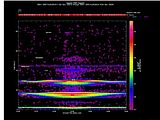
This graph shows data acquired by Cassini as it flew by Titan at an altitude of 1,200 kilometers (745 miles) on Oct. 26, 2004 - its closet approach yet to the hazy moon. The data is from Cassini's ion and neutral mass spectrometer, which detects charged and neutral particles in the atmosphere.
The graph reveals a diversity of hydrocarbons in the high atmosphere above Titan, including benzene and diacetylene.

This image taken by Cassini's visual and infrared mapping spectrometer clearly shows surface features on Titan. It is a composite of false-color images taken at three infrared wavelengths: 2 microns (blue); 2.7 microns (red); and 5 microns (green). A methane cloud can be seen at the south pole (bottom of image). This picture was obtained as Cassini flew by Titan at altitudes ranging from 100,000 to 140,000 kilometers (88,000 to 63,000 miles), less than two hours before the spacecraft's closest approach. The inset picture shows the landing site of Cassini's piggybacked Huygens probe.
Among the surprises from those early pictures, the Titan lander revealed a landscape apparently modelled by erosion. Titan had an intricate maze of drainage channels, shoreline-like features and even pebble-shaped objects on the surface.
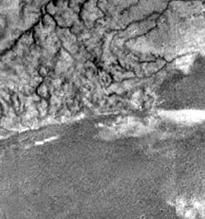
Titan Shoreline
The temperature measured at ground level was indeed supercold, about minus 180 degrees Celsius (or minus 292 Fahrenheit). There is no place on Earth even remotely like Titan's winter. The lowest temperature ever recorded on earth (minus 129 °F, minus 90 Celsius) was at Vostok, Antarctica on July 21, 1983.
(I believe we mentioned that too. So what difference does -100 make if you can survive the heart of the sun?)
Titan's atmosphere was probed and sampled for analysis at altitudes from 160 km (96 miles) to the ground, revealing a uniform mix of methane with nitrogen in the stratosphere. Methane concentration increased steadily in the troposphere down to the surface.
Clouds of methane at about 20 km (12 miles) altitude and methane or ethane fog near the surface were detected.

This image shows Titan in ultraviolet and infrared wavelengths. It was taken by Cassini's imaging science subsystem on Oct. 26, 2004, and is constructed from four images acquired through different color filters. Red and green colors represent infrared wavelengths and show areas where atmospheric methane absorbs light. These colors reveal a brighter (redder) northern hemisphere.
Blue represents ultraviolet wavelengths and shows the high atmosphere and detached hazes.

Cassini-Huygens supplied new evidence about why Titan has an atmosphere, making it unique among all solar system moons, a University of Arizona planetary scientist says. Scientists can infer from Cassini-Huygens results that Titan has ammonia, said Jonathan I. Lunine, an interdisciplinary scientist for the European Space Agency's Huygens probe that landed on Titan last month. "I think what's clear from the data is that Titan has accreted or acquired significant amounts of ammonia, as well as water," Lunine said.
"If ammonia is present, it may be responsible for resurfacing significant parts of Titan."
Titan is one of only four solar system terrestrial bodies that has an atmosphere.
That mostly nitrogen atmosphere probably came from liquid ammonia on Titan, according to UA's Jonathan Lunine.
He predicts that Cassini instruments will find that Titan has a liquid ammonia-and-water layer beneath its hard, water-ice surface. Cassini will see -- Cassini radar has likely already seen -- places where liquid ammonia-and-water slurry erupted from extremely cold volcanoes and flowed across Titan's landscape. Ammonia in the thick mixture released in this way, called"cryovolcanism," could be the source of molecular nitrogen, the major gas in Titan's atmosphere.
Lunine and five other Cassini scientists reported on the latest results from the Cassini-Huygens mission at the American Association for the Advancement of Science meeting in Washington, D.C. (Feb. 19).
Cassini radar imaged a feature that resembles a basaltic flow on Earth when it made its first close pass by Titan in October 2004. Scientists believe that Titan has a rock core, surrounded by an overlying layer of rock-hard water ice. Ammonia in Titan's volcanic fluid would lower the freezing point of water, lower the fluid's density so it would be about as buoyant as water ice, and increase viscosity to about that of basalt, Lunine said. "The feature seen in the radar data suggests ammonia is at work on Titan in cryovolcanism."
Both Cassini's Ion Neutral Mass Spectrometer and Huygen's Gas Chromatograph Mass Spectrometer (GCMS) sampled Titan's atmosphere, covering the uppermost atmosphere down to the surface. But neither detected the non-radiogenic form of argon, said Tobias Owen of the University of Hawaii, a Cassini interdisciplinary scientist and member of the GCMS science team. That suggests that the building blocks, or "planetesimals," that formed Titan contained nitrogen mostly in the form of ammonia.
Titan's eccentric, rather than circular, orbit can be explained by the moon's subsurface liquid layer, Lunine said. Gabriel Tobie of the University of Nantes (France), Lunine and others will publish an article about it in a forthcoming issue of Icarus.
"One thing that Titan could not have done during its history is to have a liquid layer that then froze over, because during the freezing process, Titan's rotation rate would have gone way, way up," Lunine said. "So either Titan has never had a liquid layer in its interior -- which is very hard to countenance, even for a pure water-ice object, because the energy of accretion would have melted water -- or that liquid layer has been maintained up until today. And the only way you maintain that liquid layer to the present is have ammonia in the mixture."
Cassini radar spotted a crater the size of Iowa when it flew within 1,577 kilometers (980 miles) of Titan on Tuesday, Feb. 15. "It's exciting to see a remnant of an impact basin," said Lunine, who discussed more new radar results that NASA released at an AAAS news briefing today. "Big impact craters on Earth are nice places for getting hydrothermal systems. Maybe Titan has a kind of analogous 'methanothermal' system," he said.
Titan Layers

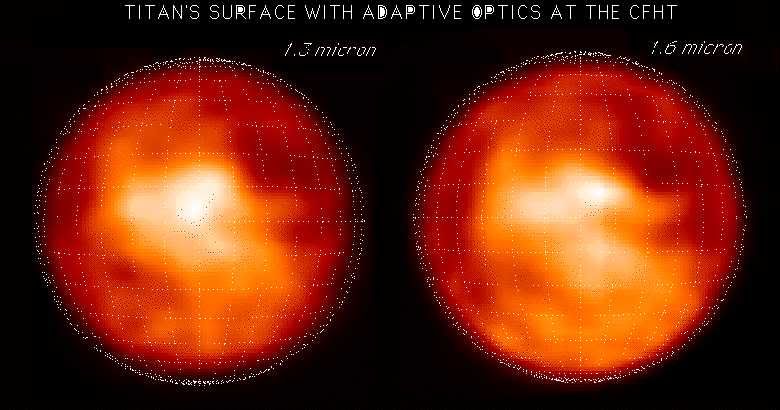
Radar results that show few impact craters is consistent with very young surfaces. "That means Titan's craters are either being obliterated by resurfacing, or they are being buried by organics," Lunine said. "We don't know which case it is." Researchers believe that hydrocarbon particles that fill Titan's hazy atmosphere fall from the sky and blanket the ground below. If this has occurred throughout Titan's history, Titan would have "the biggest hydrocarbon reservoir of any of the solid bodies in the solar system," Lunine noted.
In addition to the question about why Titan has an atmosphere, there are two other great questions about Saturn's giant moon, Lunine added.
A second question is how much methane has been destroyed throughout Titan's history, and where all that methane comes from. Earth-based and space-based observers have long known that Titan's atmosphere contains methane, ethane, acetylene and many other hydrocarbon compounds. Sunlight irreversibly destroys methane in Titan's upper atmosphere because the released hydrogen escapes Titan's weak gravity, leaving ethane and other hydrocarbons behind.
When the Huygens probe warmed Titan's damp surface where it landed, its instruments inhaled whiffs of methane. That is solid evidence that methane rain forms the complex network of narrow drainage channels running from brighter highlands to lower, flatter dark areas. Pictures from the UA-led Descent Imager-Spectral Radiometer experiment document Titan's fluvial features.
The third question -- one that Cassini was not really instrumented to answer -- Lunine calls the "astrobiological" question. It is, given that liquid methane and its organic products rain down from Titan's stratosphere, how far has organic chemistry progressed on Titan's surface? The question is, Lunine said, "To what extent is any possible advanced chemistry at Titan's surface at all relevant to prebiotic chemistry that presumably occurred on Earth prior to the time life began?"
Source: University of Arizona
TO WHAT EXTENT????? YOU HAVE GOT TO BE KIDDING ME!
Some process is renewing Titan's supply of methane. My, oh, my. Now what could that possibly be?
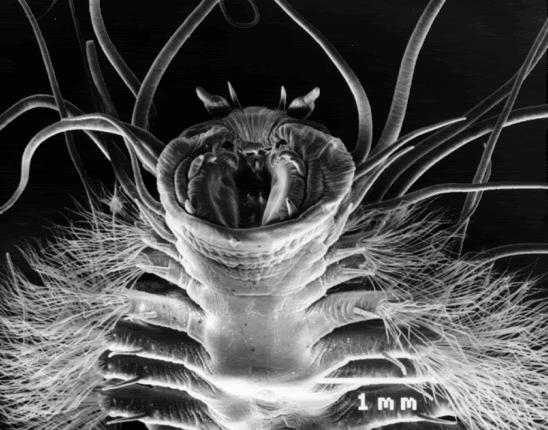
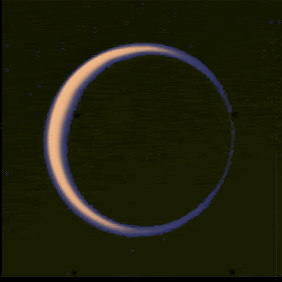
WATCH IT MOVE
TITAN
ICE, ICE, BABY

SEZ NITZANA


